Not every business is a household name. If you’re a small or medium-sized company, promoting yourself and competing with the big brands is not always easy.
Your products might be great, but you won’t make sales if nobody knows about you. Even if someone stumbles upon your website, products, or social media pages, they may wonder whether you’re legitimate.
That’s why you need to develop clever ways to add credibility to your brand and products.
Start by including elements that add credibility to your website. But that alone won’t always do the trick.
Using micro-influencers is one of our favorite ways to add credibility to your products and promote your brand. We believe in this strategy, which made our list of the top marketing trends.
What exactly is a micro-influencer? They are defined as people with between 1k and 100k followers on social media.
In 2016, 94% of marketers reported effective influencer marketing tactics. In more recent surveys, there appears to be a dip in positive responses to 83% in 2023. That’s still a significantly optimistic outlook for this marketing option.
Now is your chance if you’re interested in bringing micro-influencers to help your marketing campaigns. I’ll tell you everything you need to know about using micro-influencers effectively to increase your product credibility and brand awareness.
Why you should work with micro influencers
One of the top reasons why it’s appealing to work with micro-influencers is because it’s cost-effective.
Take a look at the typical expenditure for micro-influencers to give you an idea of potential costs.
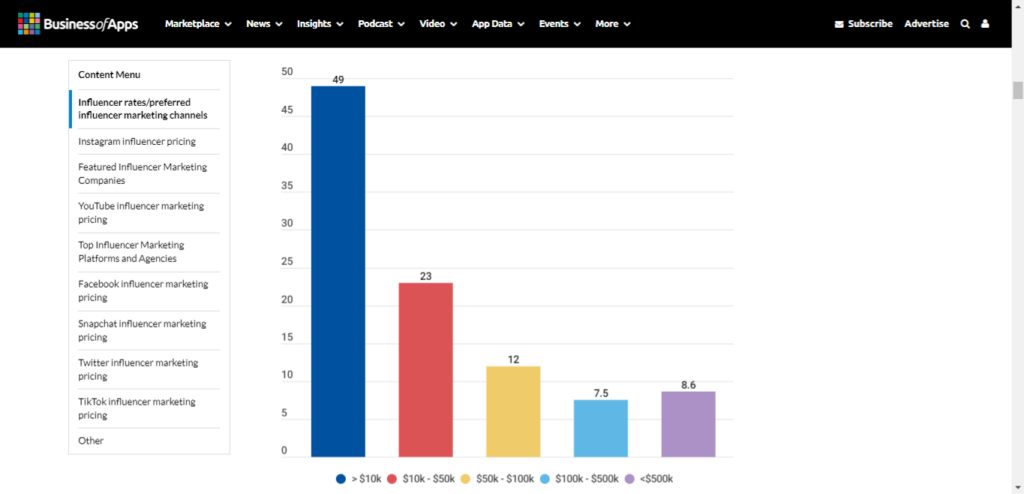
Now let’s look at the most popular social media platforms for influencers.
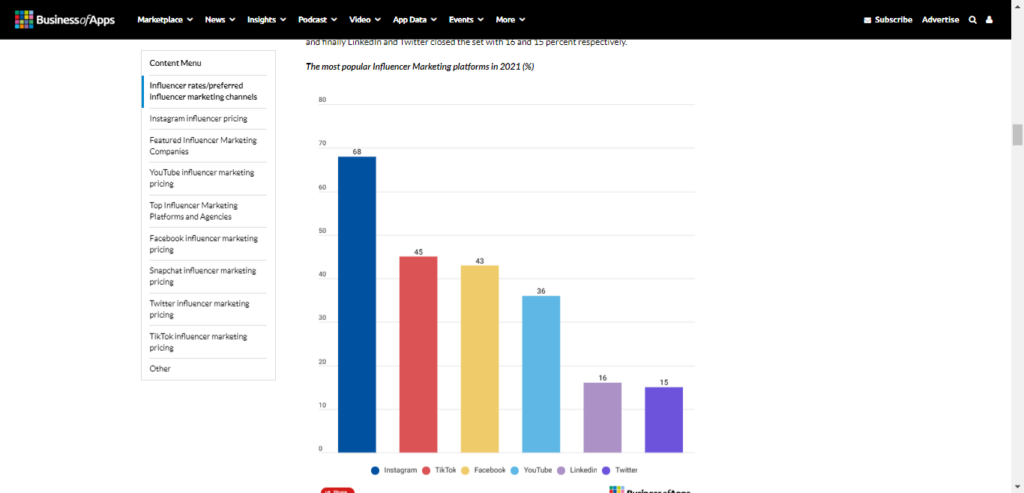
These numbers will vary based on whom you’re working with, the number of followers they have, and the type of post you’re asking for. However, this is still a good price gauge.
For the most part, micro-influencers are just regular people. They’re not famous. They have regular jobs but happen to have a large social media following.
The reason why I’m bringing this up is that you can use this knowledge to your advantage. If they aren’t used to branding themselves as a business, you could get away with not paying them at all.
Rather than sending money, you could start your initial negotiations by offering free products.
If it’s the first time a brand has contacted them, they might accept your offer and be excited to get some free stuff. You could also send them a gift card or something else of similar value.
Most micro-influencers won’t have an agent, so you’ll communicate directly with them. This should make negotiations much smoother.
Negotiations may not be so simple if you’re working with middle influencers, macro influencers, or celebrities. These people have between 100k-500k followers, 500k-1 million followers, and more than 1 million followers, respectively.
Another reason why it’s better to work with micro-influencers is that the engagement with their followers is very high.
As you can see from these numbers, people trust micro-influencers. This trust and engagement add credibility to your products and lead to buying conversions.
That’s because people can relate to micro-influencers. They don’t view them the same way they view a celebrity.
Research shows that 70% of consumers check social media before making a buying decision. It makes sense for you to work with people who already have a strong presence on these channels.
Finding the right influencers for your brand
Now that you’ve decided you want to work with micro-influencers, where do you find them?
Don’t pick someone randomly. Make sure your influencers are aligned with your company image.
As we said before, most of these influencers are just regular people. Investigate them through their social media profiles before you have them represent your brand.
The last thing you want to do is work with someone who compromises your brand’s reputation. You also want to ensure you’re not working with micro-influencers who represent brands in conflict with your products.
For example, let’s say you run a local business that creates vegan products. Preventing animal cruelty is part of your brand’s mission statement.
You shouldn’t work with a micro-influencer promoting companies selling leather jackets or delivering steaks to their customer’s doorsteps. It just doesn’t fit with your brand.
If your customers find out you’re paying someone like this, they may think your mission statement is fraudulent. This discredits your brand, which is the opposite of what you’re trying to accomplish.
Let’s check out a perfect example of a micro-influencer that fits well with a brand. Check out this post from James Tollefson’s Instagram profile:
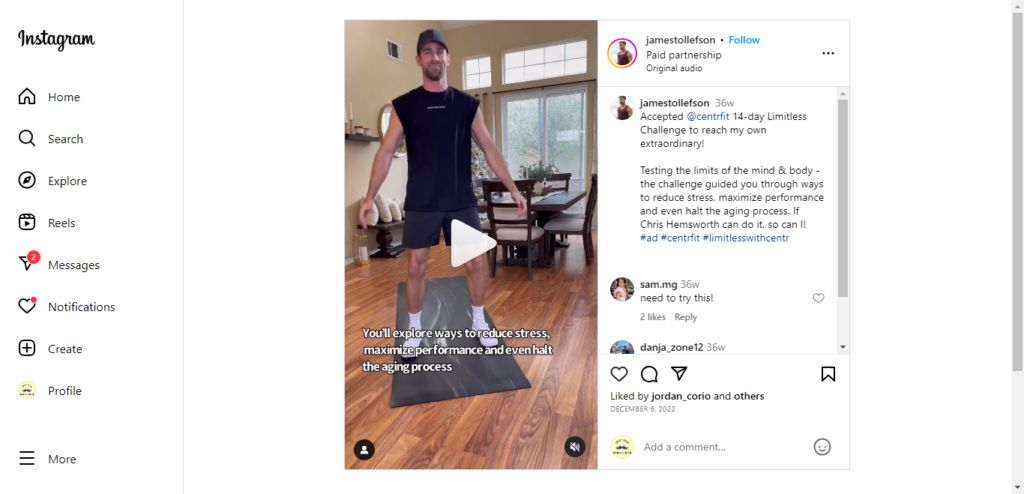
As a fitness enthusiast with over 29.9k followers, James is the perfect candidate for the sponsored product he’s promoting.
If a successful national chain such as Dick’s believes in using micro-influencers, your business should also be doing it.
Start with your existing followers. It’s easier to work with someone who already knows about your brand and may own some of your products already.
Who knows, maybe they’ve even posted about your company in the past. Take some time to find out whether anyone posting about your brand on social media has many followers.
This is a logical place to start your search.
Use tools to help you analyze potential influencers
Although going through your current followers manually and trying to find people with the most followers may work for some businesses, it’s not reasonable if you’ve got a ton of followers.
Instead, you’ll need to use tools to help you get matched with micro-influencers. There are platforms that exist solely to connect micro-influencers with brands.
Klear is a great place for you to start. The system analyzes over 500 million profiles across 60k different categories from the last five years.
It allows you to narrow down your searches by the network, such as Twitter, Instagram, YouTube, TikTok Tok or blogs.
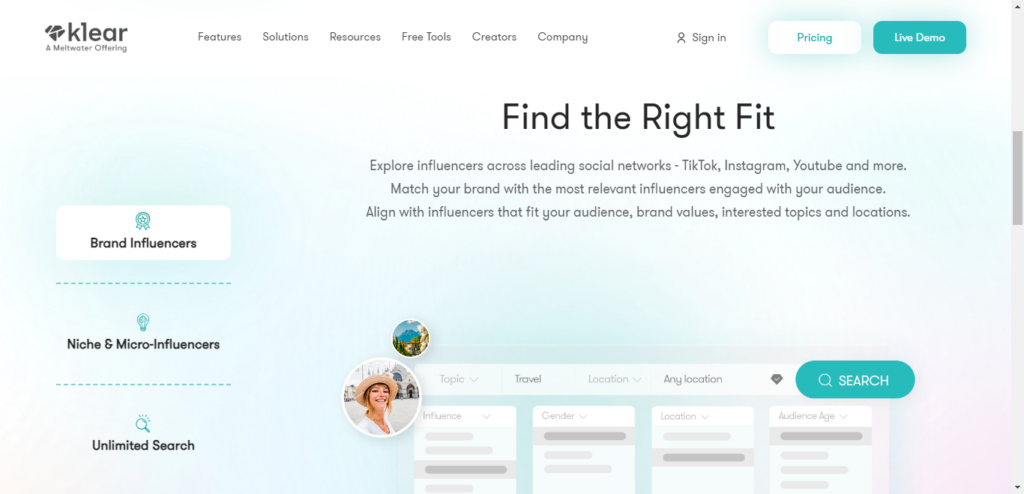
If you want to work with influencers on this network, you can connect with them directly through this platform.
You can even work with multiple influencers for each campaign. After, you’ll see the analytics for each one with valuable information such as:
- mentions
- engagement
- reach
Klear shows you this information for each influencer on all the social platforms they use to promote your products.
That way, it’s easier for you to measure which influencers have the most success with your brand. You’ll want to work with these people in the future, but I’ll discuss that in greater detail later.
There’s another reason why you should use tools to analyze your micro-influencers. You can’t just assume you know their target audience.
For example, let’s say your company targets males between the ages of 18 and 26 living in or around New York City.
You find a prospective influencer, a 22-year-old male living in Manhattan with 20k Instagram followers. Perfect, right? Not so fast.
Just because a micro influencer fits your target market doesn’t mean their followers do too. If 80% of this person’s followers are females living in California, you’ll want to look for another micro-influencer to represent your products.
If you don’t want to pay for software that connects you with micro-influencers, you can still get this data free.
Micro-influencers with Instagram business accounts have detailed analytics and insights about their followers. Just ask them to send you screenshots of this information.
Here’s an example of what this data looks like:

This will help confirm that your micro-influencers have the same followers that fit your target market for specific products and campaigns.
As a result, you’ll see a higher rate of engagement, which increases the credibility of whatever you’re selling.
Online ratings and reviews
When people search for your products using Google, they are looking for as much information as possible about your brand and your product.
Studies show that 81% of consumers research products online before purchasing. But what are they looking for exactly?
More than 67% of consumers say they are influenced by online reviews.

Furthermore, more than 50% of people conducting a search online won’t look past the first page of Google’s search engine result pages (SERPs).
People won’t automatically go straight to your website. They know you won’t display any negative reviews.
That’s why they conduct their own research. In addition to working with micro-influencers on social media, you must populate the SERPs with reviews and positive comments about your product.
Ask micro-influencers to rate and review your product online to add credibility to your products. You can even ask influencers with an active blog to give a shout-out to your product in a post.
The more positive reviews, ratings, and comments about your brand there are on the first page of a search query, the more credibility your products will have.
Have your influencers share a story
Having micro-influencers post about your brand is an effective marketing strategy. But you need to come up with ways to maximize engagement.
Telling people a product is great isn’t as effective as showing them it’s great. Nothing adds credibility to a product more than results.
One of the best ways to accomplish this is by mastering the art of storytelling.
Have your micro-influencers explain how your product improved their lives. They can do this by posting on social media or sharing these stories in their online reviews, which were just discussed.
But it doesn’t have to stop there. You can also set up a page on your website where micro-influencers can share stories with your brand’s community.
Lululemon uses this strategy on its website with the influencer group “Sweat Collective.”
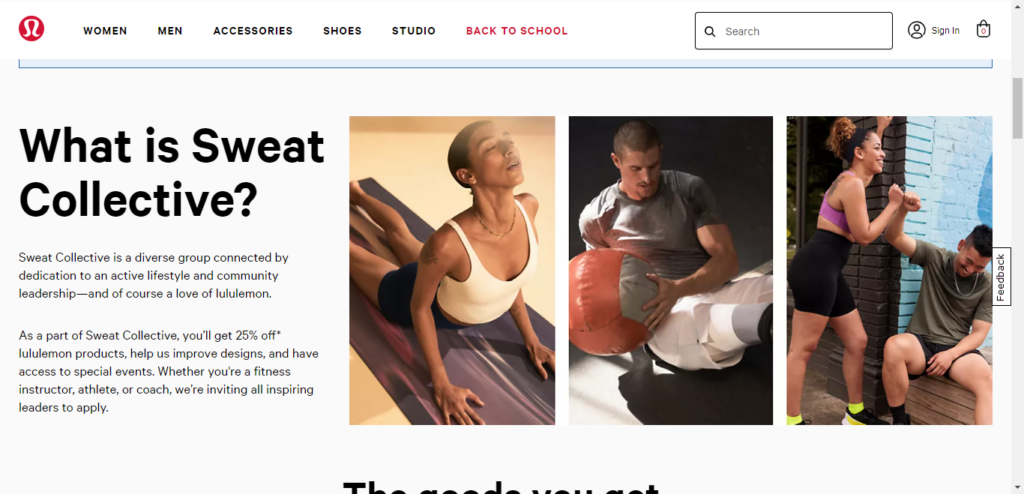
This page is dedicated to micro-influencers and their yoga and fitness journeys.
It serves as proof that these products work. Ultimately, this adds credibility to their brand and products.
Incorporate the same strategy on your website when you’re working with micro-influencers.
Build long-term relationships with micro-influencers
When you’re searching for a micro-influencer to represent your brand and add credibility to your products, consider looking for someone with whom you can build a long working relationship.
It’s easier to keep working with the same influencers repeatedly instead of finding a new one whenever you want to run a campaign.
Don’t get us wrong. Just because you used someone once or twice doesn’t mean you should automatically keep using them. Refer back to what we discussed earlier regarding tools and analytics.
If their engagement is low and their followers aren’t responding, it’s OK for you to cut ties.
But if things go well in the first couple of campaigns, see what else you can accomplish with this influencer.
Let’s say you start by having them post on Instagram. Next, you may decide to have them post on Twitter or share their success story on your website.
After that, have them write reviews about your products on various third-party websites.
Repetition is key. The more you get your micro-influencers to post and talk about your brand consistently, the more effective your marketing strategy will be.
Conclusion
Micro-influencers are a great way to gain brand exposure and increase your products’ credibility.
Working with influencers is great because they have such high engagement rates with their social media followers. Plus, the rates to hire an influencer are very reasonable.
Do your research to ensure the people you work with match your brand’s image.
You also want to be certain that their audience is the same as your target market. Use various analytics tools to help you determine this and measure the success of your campaigns.
Try to find micro influencers you can build long-term relationships.
In addition to using social media to promote your products with micro-influencers, have them populate the Google search results pages by rating and reviewing your products online.
Allow micro-influencers to share their success stories on your website to add credibility to your products.
